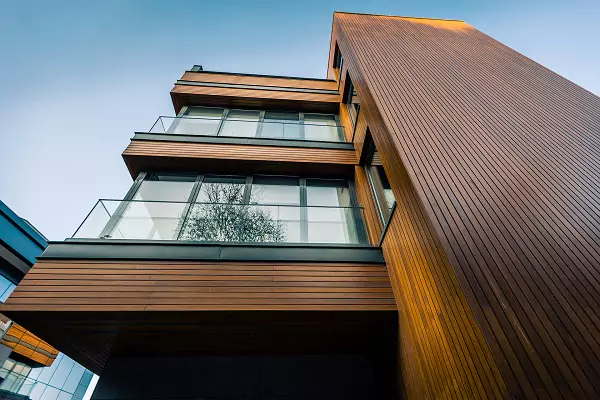
Related Posts
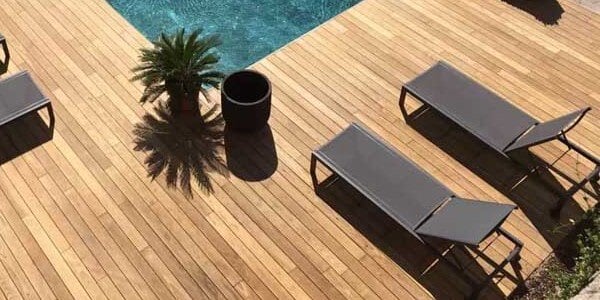
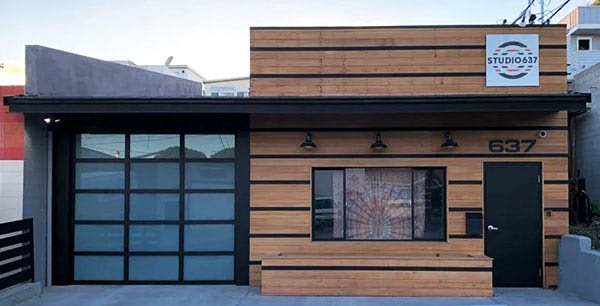

Thermally modifying wood siding is a fairly new technology (for the past 30 years or so). This scientific process takes both softwoods and hardwoods and changes them at the cellular level so they perform exceptionally well outdoors. Thermally modified wood siding is natural beautiful, behaves well and can make your home or building more attractive.
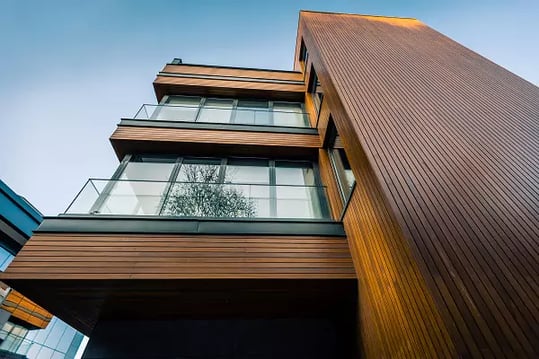
Thermally modified Ash wood siding, installed vertically and horizontally
Thermally modified wood siding starts out as a standard wood species, like American Ash or Western Hemlock. Then they are dried, scientifically, in specialized kilns to ‘cook’ the sugars out of the boards, slowly. When done expertly, using the appropriate process and proper drying schedule, the result is beautiful wood siding that significantly outperforms the original wood species.

Thermally modified Hemlock wood siding, stained and painted, vertical and horizontal
All exterior wood siding will expand and contract outdoors, depending on the moisture content of the wood. When it is drier, wood siding will shrink somewhat. When exterior woods get wet, they pick up moisture and will expand, especially widthwise.
Thermally modified exterior wood siding will expand and contract, too. However, thermally modified wood siding is exceptionally stable. That means that thermally modified wood siding will expand and contract significantly less than the same wood species that is not modified.
Because the thermally modification process cooks the sugars out of wood, the newly thermally modified wood becomes very resistant to rot and decay. The food sources (sugars) that mold and bacteria feed on are removed from the wood. This makes thermally modified wood siding rot resistant, and much longer lasting. Thermally modified wood is classified as very resistant to rot, with an expected lifetime of 25 years or longer.
The same is true for insect resistance. The sugars that termites and ants feed have been changed, permanently, in the thermal modification process. The resulting thermally modified wood is now far less appetizing to insect infestation.
Looking for some design inspiration?
Download the "Featured Rainscreen Siding Project Portfolio" today.
Thermally modified wood siding is naturally beautiful. It performs better, is highly stable and more durable than standard non-modified exterior woods. If you prefer the look of a hardwood, thermally modified American Ash is a great option. American Ash is a native North American wood species that darkens up to medium brown color tones when it is thermally modified.
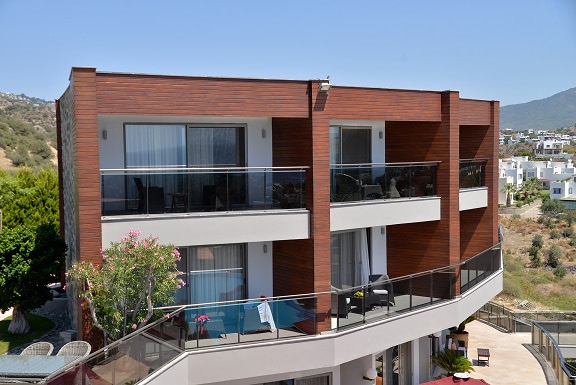
Thermally modified Ash wood rainscreen siding
If you like the natural look of softwood siding, like western red cedar, thermally Modified Hemlock is a great siding option to consider. Thermally modified Hemlock wood siding has a similar color consistency as old growth red cedar (which is rarely available nowadays).
Mataverde Thermally Modified Hemlock wood siding is mostly vertical grained, and of the finest quality available; "A&Btr Vertical Grain, and C+ Better grade.
%20ThermaWood%20FR%20Hem-Fir%20Siding%20Project%202024/ThermaWood%20FR%20Hem-Fir%20Siding%20exterior%20soffit%20view%20The%20Ridge%20House%20project%20CA.jpg?width=973&height=503&name=ThermaWood%20FR%20Hem-Fir%20Siding%20exterior%20soffit%20view%20The%20Ridge%20House%20project%20CA.jpg) Mataverde ThermaWood FR Hem-Fir wood siding, installed on walls, soffits and ceilings
Mataverde ThermaWood FR Hem-Fir wood siding, installed on walls, soffits and ceilings
Both thermally modified Ash and thermally modified Hemlock are available in wood rainscreen siding profiles. A rainscreen system is an excellent way to improve the health benefits of your home. Or if you prefer, standard tongue and groove wood siding profiles are available, too.
CHECK OUT OUR THERMALLY MODIFIED WOOD SIDING PROJECT GALLERY
Looking for more information about wood rainscreen siding?
Download the "Ultimate Guide to Wood Rainscreen Siding" today
Oil based finishes (stains and sealers) are recommended for, and work well with, thermally modified exterior wood siding. Or you may prefer to let your thermally modified wood siding weather out to a silvery gray patina.
For more information about finishing and maintenance options,
Download "How Exterior Woods Weather" today.


